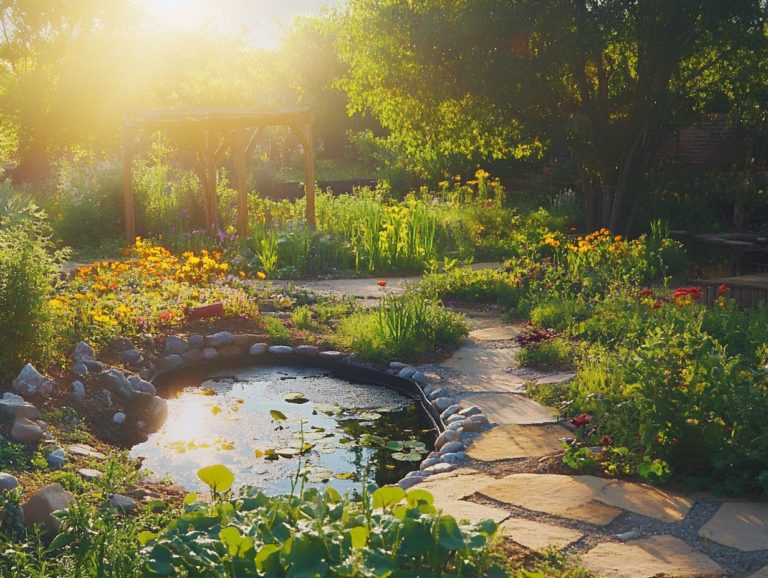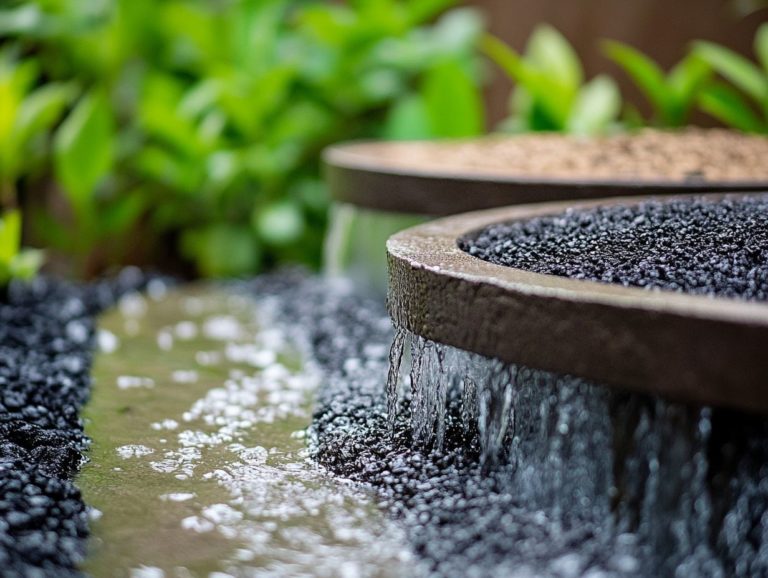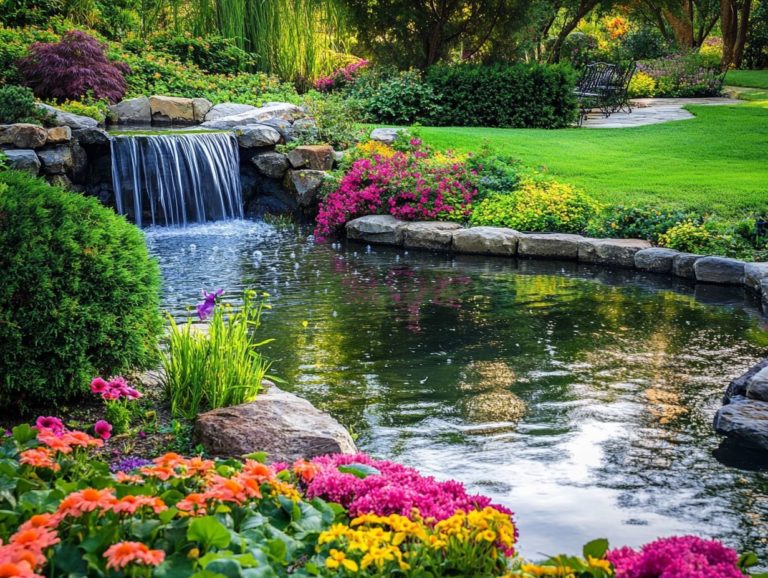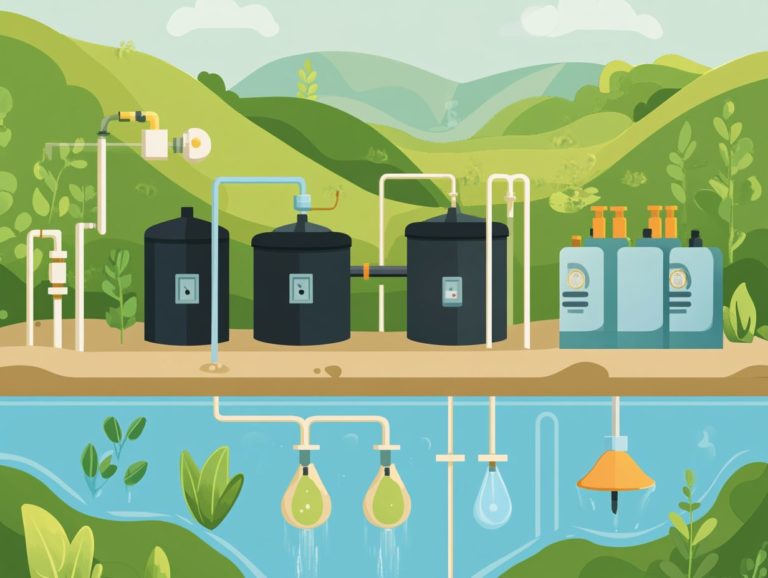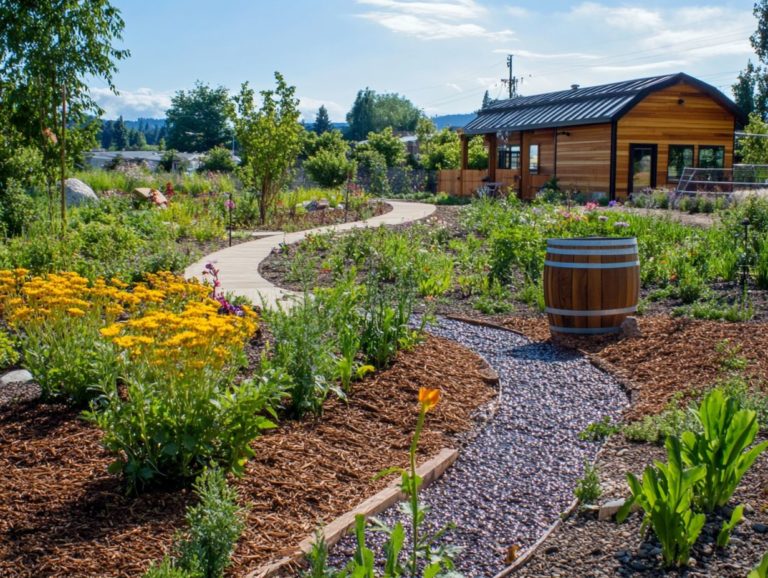5 Native Plants for Water-Sensitive Areas
Water-sensitive areas are vital to our ecosystems, significantly influencing water quality and fostering biodiversity. Selecting the appropriate plants for these regions can markedly enhance both their functionality and aesthetic appeal.
This article delves into the advantages of utilizing native plants, such as wildflowers, showcasing five exceptional species that flourish in these environments. Discover how to easily add these plants to your landscape! Create a sustainable and vibrant space.
Uncover how native flora can elevate water-sensitive areas, like those found in Virginia, into thriving habitats, enriching your surroundings while supporting the ecosystem.
Contents
- Key Takeaways:
- Benefits of Using Native Plants in Water-Sensitive Areas
- 5 Native Plants for Water-Sensitive Areas
- 4. How to Incorporate Native Plants into Water-Sensitive Areas
- Frequently Asked Questions
- 1. What are some native plants that are suitable for water-sensitive areas?
- 2. Why are native plants recommended for water-sensitive areas?
- 3. What is the benefit of using native plants in water-sensitive areas?
- 4. Can I plant non-native plants in water-sensitive areas instead?
- 5. How do I maintain native plants in water-sensitive areas?
- 6. Can I create a diverse garden using only native plants for water-sensitive areas?
Key Takeaways:
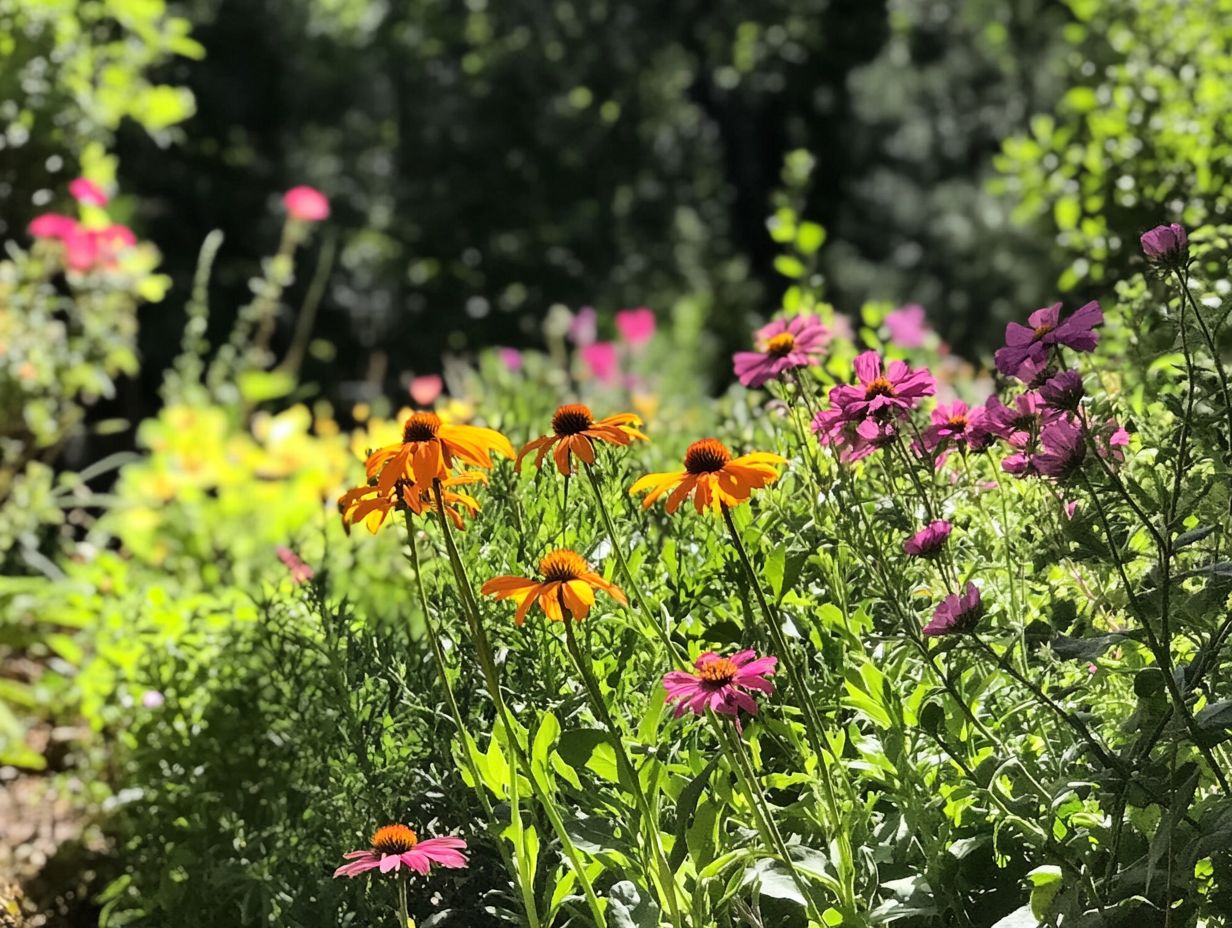
- Incorporating native plants in water-sensitive areas has various benefits, including improving water quality and providing habitat for wildlife.
- Cattails, buttonbush, blue flag iris, cardinal flower, and marsh marigold are 5 great native plant options for water-sensitive areas.
- When incorporating native plants, it’s important to understand their needs, use proper planting techniques, and follow maintenance tips for long-term success.
Benefits of Using Native Plants in Water-Sensitive Areas
Using native plants in water-sensitive areas offers numerous benefits. They thrive in various soil moisture conditions and need minimal maintenance while promoting biodiversity.
These plants are perfectly adapted to their local ecosystems, flourishing in the distinctive soil conditions of their habitats. They play a crucial role in supporting local wildlife by providing food and shelter for birds, insects, and other fauna.
When you choose plants based on their moisture needs, you make a smart investment in landscaping that s both economically and environmentally sound. Native plants require less irrigation and contribute positively to the health of water-sensitive environments. Ultimately, they strike a harmonious balance between maintaining ecological integrity and enhancing aesthetic appeal.
5 Native Plants for Water-Sensitive Areas
Selecting the right native plants for water-sensitive areas is crucial for creating thriving ecosystems. Consider options like swamp milkweed (Asclepias incarnata), blue flag iris, cardinal flower, marsh marigold, and buttonbush; these choices excel in moist conditions and can play a significant role in using native plants for water conservation while adapting beautifully to varying soil types.
These native plants do more than just beautify your landscape they significantly support local wildlife. Take swamp milkweed, for instance; it’s a magnet for pollinators, including butterflies. Blue flag iris flourishes in wet environments, creating vital habitat along shorelines.
Meanwhile, the cardinal flower, with its striking red blooms, offers nectar that delights hummingbirds and other pollinators, enhancing the vibrancy of your ecosystem. Marsh marigold brings a stunning early spring display while also stabilizing soil and preventing erosion in wetland areas.
Buttonbush, with its distinctive round flowers, not only attracts a variety of insects but also helps manage water by maintaining soil moisture. This, in turn, contributes to the overall health and biodiversity of your water-sensitive environments.
Cattails
Cattails are truly iconic wetland plants that flourish in water-sensitive areas, expertly managing soil drainage for plant health while providing a vital habitat for diverse wildlife.
These resilient plants are essential for erosion control, acting as natural barriers that mitigate the impact of water flow on soil surfaces. With their extensive root systems, they stabilize wet soils, proving invaluable in preventing sediment loss and preserving the integrity of fragile ecosystems.
Beyond their ecological contributions, cattails serve as shelter and sustenance for birds, amphibians, and other aquatic organisms, enhancing biodiversity in their environments. Their striking architectural form and vibrant green hues add aesthetic appeal to gardens and landscapes, inviting appreciation for nature’s beauty while fulfilling essential roles in stabilizing wetland ecosystems.
Start your journey to a more vibrant, eco-friendly garden today!
3.2. Buttonbush
Buttonbush thrives in wet areas, making it a fantastic addition to your water-sensitive garden. This remarkable native plant flourishes in high-water table environments, ideal for species like buttonbush.
With its striking spherical flower clusters that bloom from late spring to early summer, buttonbush enhances the visual allure of your space while attracting a variety of pollinators, including bees and butterflies. This unique plant transforms your garden into an ecological oasis and offers practical solutions for moisture management.
By establishing a deep root system, buttonbush prevents soil erosion and retains water, ensuring a healthier garden environment for you. Its adaptability to wet conditions makes it ideal for bioswales and rain gardens, combining aesthetic charm with significant environmental benefits.
3.3. Blue Flag Iris
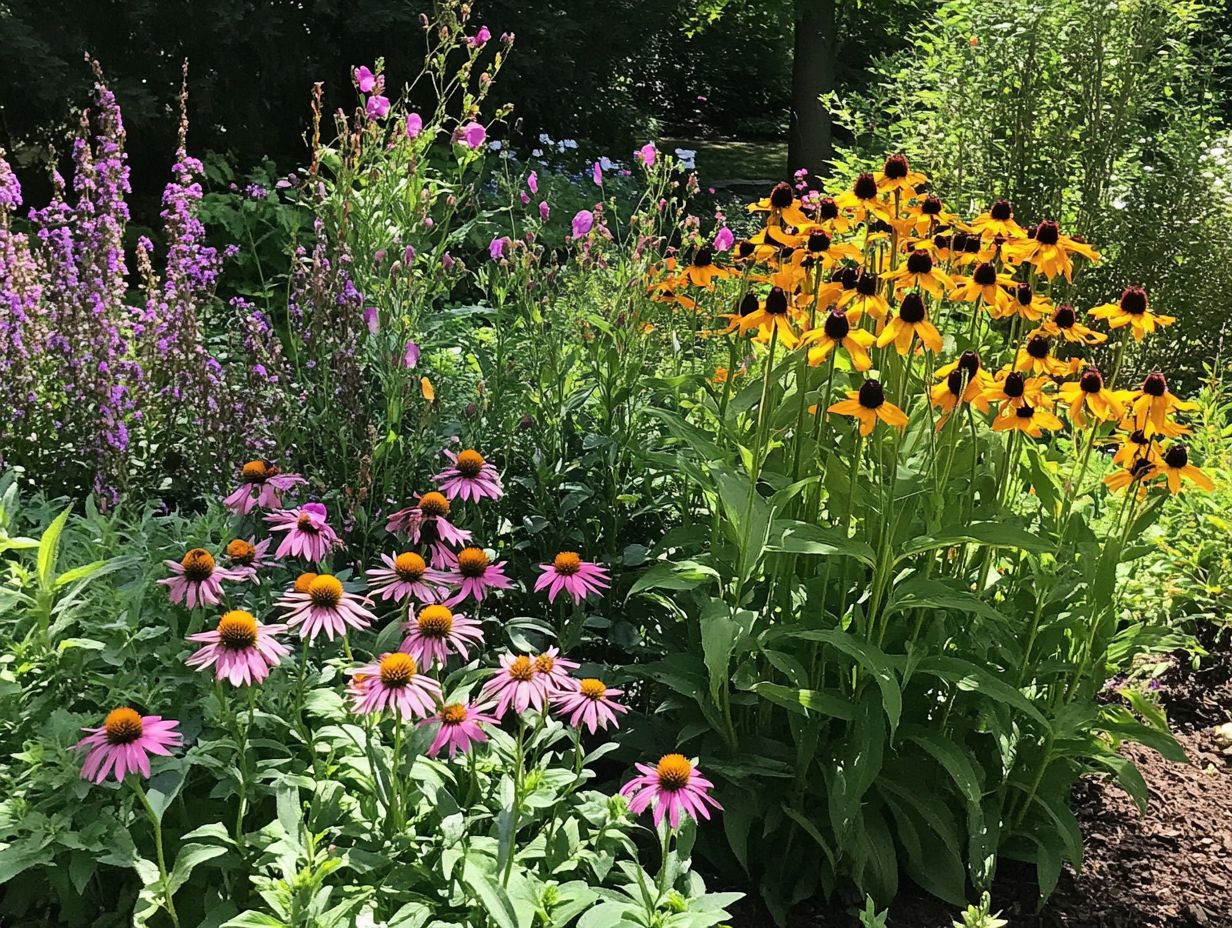
The Blue Flag Iris is an exquisite native plant that flourishes in wet areas, captivating you with its striking blue flowers and impressive adaptability to various soil moisture conditions. This hardy plant not only beautifies wetlands but also supports local ecosystems.
By providing habitat and food for diverse pollinators, it ensures that insects like bees and butterflies thrive. Its presence is particularly advantageous in water-sensitive environments, where it stabilizes soil and filters water, effectively preventing erosion and promoting biodiversity.
The Blue Flag Iris is an integral part of the food web, offering sustenance to wildlife and contributing to the overall health of aquatic habitats.
3.4. Cardinal Flower
You ll love the Cardinal Flower for its vibrant red blooms and preference for moisture-rich environments, making it a breathtaking addition to your water-sensitive garden.
This species enchants the eye with its vivid color and acts as a magnet for pollinators, including hummingbirds and bees, who eagerly seek its nectar during the blooming season. For optimal growth, plant it in rich, moist soils that receive partial shade to full sun, allowing it to flourish in natural wetlands or alongside your garden ponds.
By attracting diverse wildlife, the Cardinal Flower boosts biodiversity and adds lively color to your garden in late summer and early fall.
3.5. Marsh Marigold
Marsh Marigold is a captivating native plant that flourishes in wet environments, proudly displaying its bright yellow flowers while playing a vital role in maintaining soil moisture.
This perennial grows well in wetlands and pond edges, thriving in partial shade to full sun for optimal growth. Its lush foliage enhances the beauty of your landscape and provides essential habitats for various pollinators, like bees and butterflies, significantly boosting local biodiversity.
The plant’s impressive ability to filter water runoff contributes to improved water quality in its surroundings, making it a valuable asset to any garden design. Gardeners often find joy in its vibrant blooms during early spring, heralding the warmer months ahead.
4. How to Incorporate Native Plants into Water-Sensitive Areas
Incorporating native plants into water-sensitive areas requires a thorough understanding of their unique needs. Careful selection of suitable species and effective planting techniques are key to ensuring they thrive in diverse soil moisture conditions.
When selecting plants, it s essential to assess the specific moisture levels of your site. Some species flourish in well-drained soils, while others prefer a more saturated environment. By identifying the right plants, you can establish a resilient ecosystem capable of adapting to changing weather patterns. Employing essential planting techniques, such as ensuring adequate spacing and adding organic matter, improves soil health and moisture retention, greatly enhancing plant health.
Ongoing maintenance is equally important. Regularly monitoring soil moisture levels allows for timely adjustments to watering or drainage, ensuring that your plants receive the perfect amount of hydration to thrive. Adapting your care practices in response to seasonal changes is key to nurturing a vibrant and sustainable landscape.
4.1. Understanding the Needs of Native Plants
Understanding the needs of native plants is essential for their successful integration into your garden, especially regarding soil moisture, sunlight, and space requirements.
These plants truly thrive when their specific conditions are met, having evolved alongside local environmental factors. For example, some native species flourish in well-drained soils and prefer dry conditions, while others enjoy the constant moisture found near rivers or wetlands. The amount of sunlight is also crucial for their growth; shade-loving varieties can struggle in overly bright environments.
By recognizing the unique characteristics of water-sensitive areas, you can select the right flora, ensuring not only their survival but also robust health and ecological harmony within your garden ecosystem.
4.2. Proper Planting Techniques
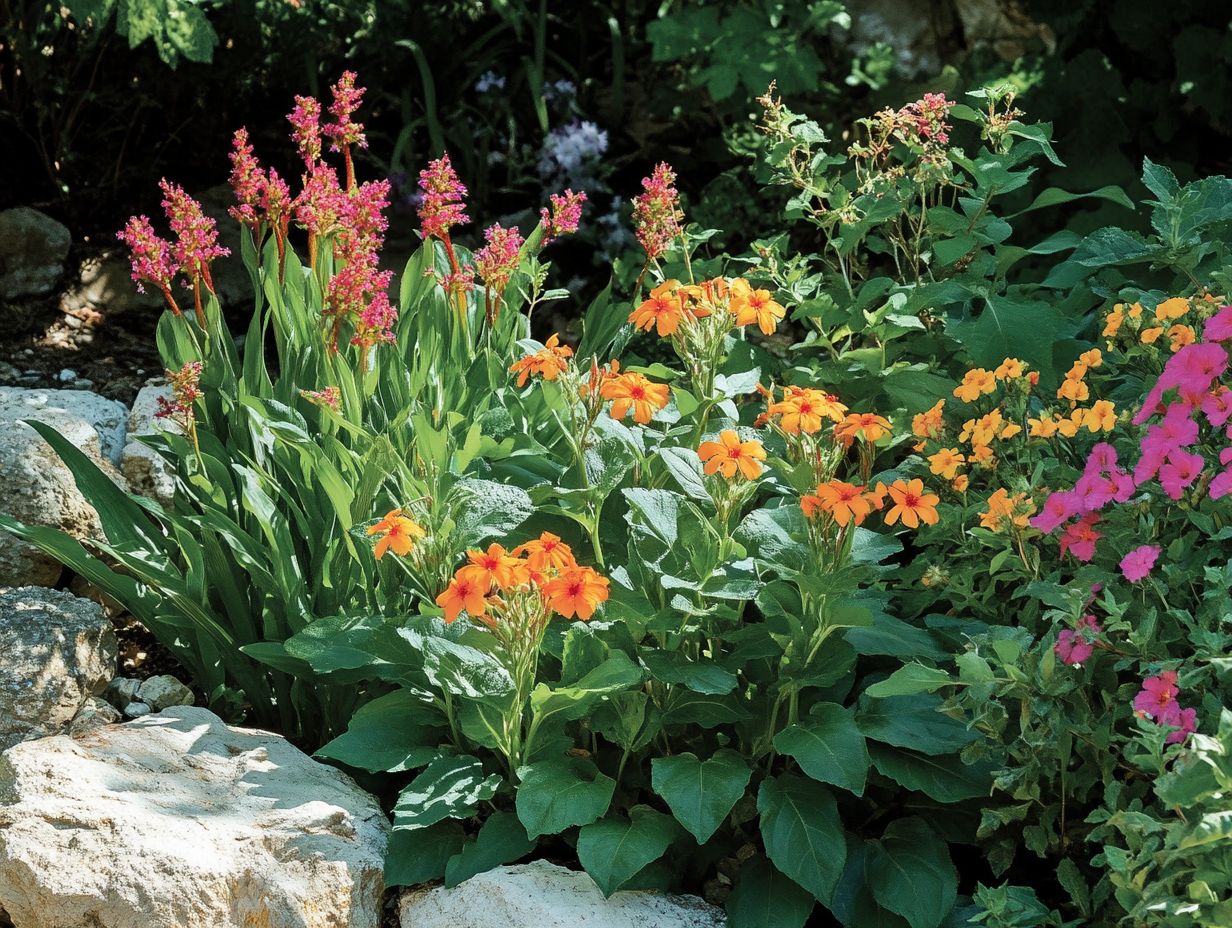
Employing proper planting techniques is essential for establishing native plants, particularly when addressing soil drainage and ensuring optimal growth in water-sensitive areas.
By taking the time to prepare the soil diligently, you can enhance its fertility and structure, creating a welcoming environment for these invaluable species.
Start by testing the soil pH and composition to identify any necessary amendments, such as organic matter or sand, which will improve aeration and moisture retention.
When considering spacing, keep in mind the mature size of each plant to avoid overcrowding. This consideration allows for healthy air circulation and light penetration.
A consistent watering regimen especially during the initial growth phase is crucial. Deeper, less frequent watering encourages robust root systems, fortifying the plants against drought.
Ultimately, these thoughtful approaches will support long-term vitality, enabling native species to thrive while providing essential habitat for local wildlife.
4.3. Maintenance Tips for Native Plants
Regular maintenance keeps your native plants thriving and happy! It’s essential for their well-being in water-sensitive areas, emphasizing the importance of keeping the soil wet enough, weed control, and seasonal care practices.
By adopting these crucial maintenance practices, you can cultivate a thriving ecosystem that champions biodiversity. Keeping a close eye on soil moisture levels is vital, as it ensures that native plants receive the right amount of hydration without risking waterlogging.
Utilizing mulch can significantly enhance moisture retention while suppressing pesky weeds that compete for valuable resources. Managing invasive species is vital for preserving the integrity of native plant communities.
Adjusting your care routines to harmonize with seasonal shifts such as autumn pruning or spring fertilization will help ensure that your plants flourish year-round, contributing to a resilient and vibrant environment.
Start your journey with native plants today and watch your garden bloom!
Why Native Plants Are the Best Choice for Water-Sensitive Areas
Native plants are your best bet for water-sensitive areas. They adapt well to local soil conditions, require low maintenance, and play an important job in erosion control and biodiversity.
These resilient species flourish in their natural habitats. They provide essential habitats for various wildlife, including pollinators, birds, and beneficial insects. By cultivating a natural ecosystem, you significantly decrease reliance on chemical fertilizers and pesticides that can harm both plants and animals.
With their deep root systems, native plants improve soil structure and enhance water infiltration. This makes them crucial for managing runoff and reducing flooding.
By championing local flora, you will create sustainable landscapes that nourish the environment and reward you with vibrant, low-maintenance gardens.
Final Thoughts and Recommendations
In conclusion, incorporating native plants into your gardening endeavors in water-sensitive areas will transform your landscape into a sustainable haven that is both visually stunning and environmentally beneficial.
Embrace these plants to create vibrant ecosystems that require less maintenance while actively contributing to local biodiversity. Explore local native plant databases today to find resources just for you!
Consulting with gardening experts can provide valuable insights into which plants will thrive in your unique conditions. This ensures your garden flourishes beautifully while aligning with your style. This collaborative approach allows you to cultivate a sustainable garden that reflects nature s resilience and your individual preferences.
Frequently Asked Questions
1. What are some native plants that are suitable for water-sensitive areas?
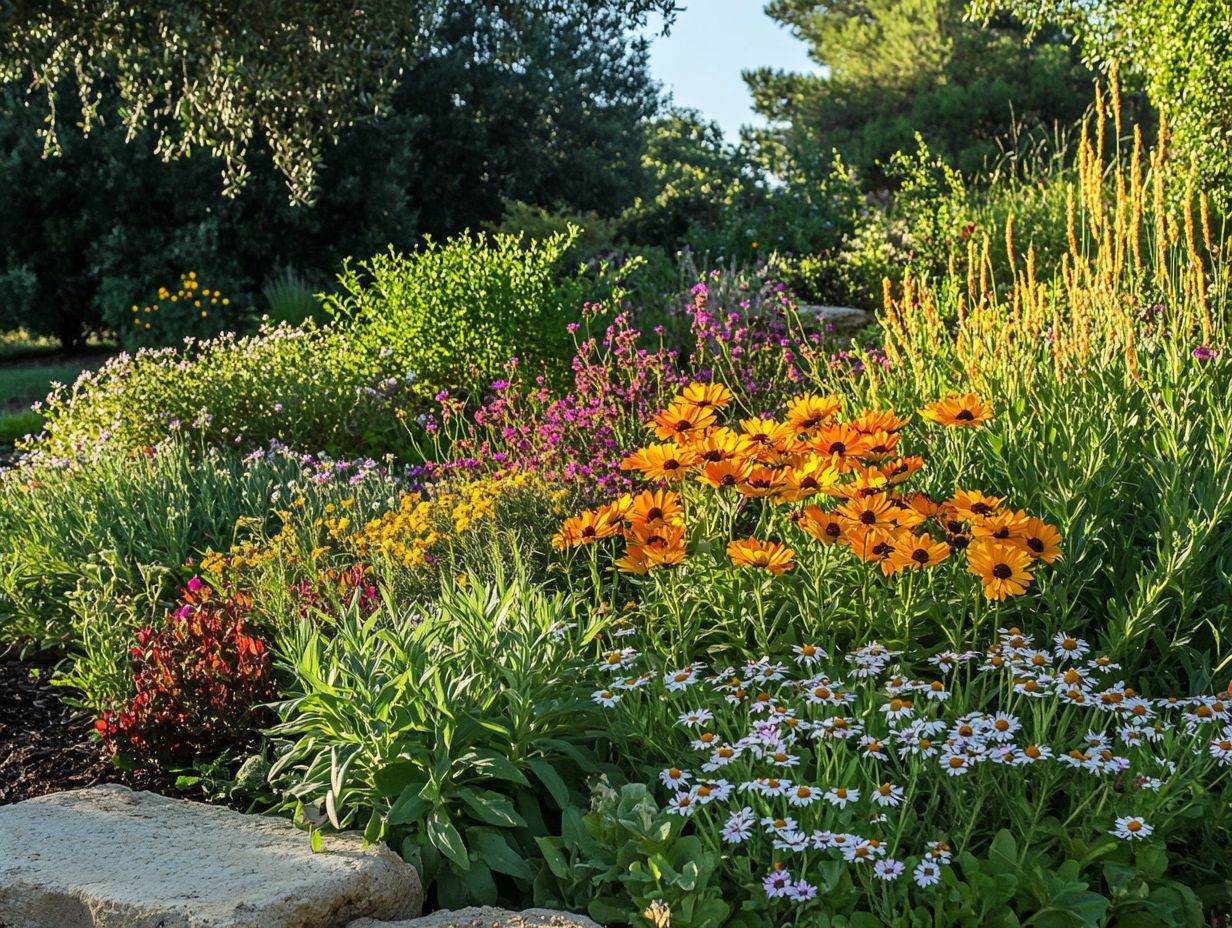
Discover these amazing native plants perfect for water-sensitive areas: blue flag iris, cardinal flower, marsh marigold, water lily, and sweet flag.
2. Why are native plants recommended for water-sensitive areas?
Native plants are recommended for water-sensitive areas because they adapt to the local climate and soil conditions. This makes them more resilient to changes in water levels and less likely to require extra watering.
3. What is the benefit of using native plants in water-sensitive areas?
The main benefit of using native plants in water-sensitive areas is that they help prevent erosion and filter pollutants from runoff. This improves water quality and promotes a healthy ecosystem.
4. Can I plant non-native plants in water-sensitive areas instead?
It is not recommended to plant non-native plants in water-sensitive areas. They may not adapt to local conditions and can become invasive, harming native plant and animal species.
5. How do I maintain native plants in water-sensitive areas?
Native plants in water-sensitive areas require minimal maintenance. However, it is important to periodically remove debris or weeds that may block water flow and avoid using pesticides or fertilizers that can harm the plants and surrounding water sources.
6. Can I create a diverse garden using only native plants for water-sensitive areas?
Absolutely! There is a wide variety of native plants suitable for water-sensitive areas, allowing you to create a beautiful and diverse garden that also benefits the environment.

